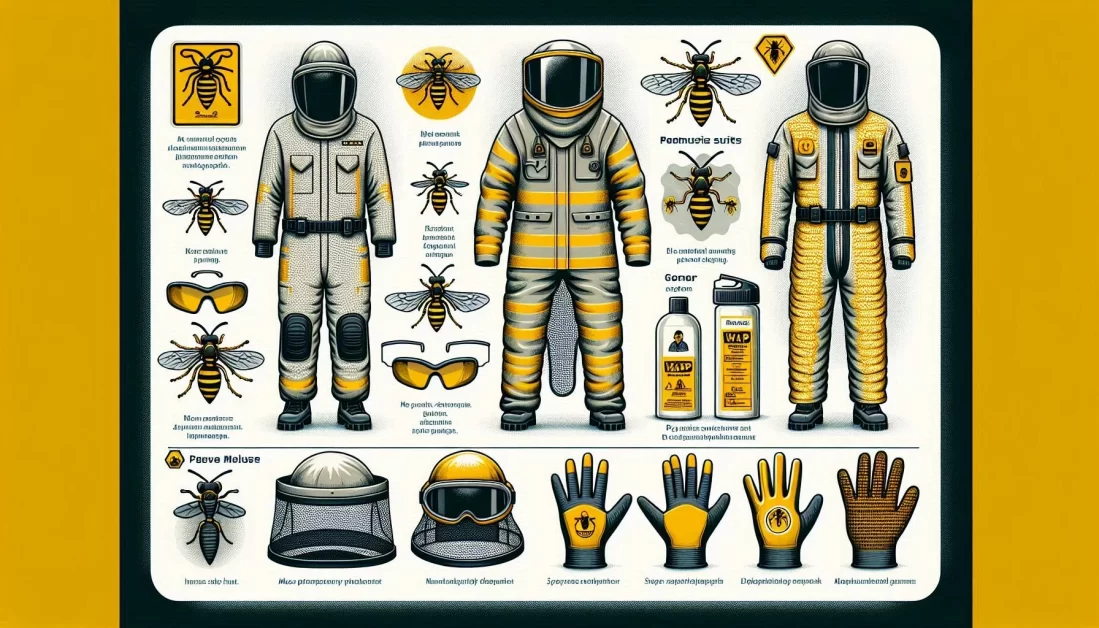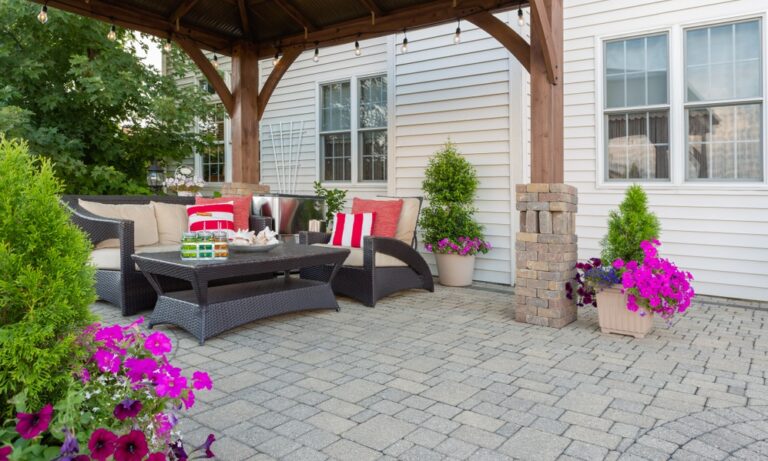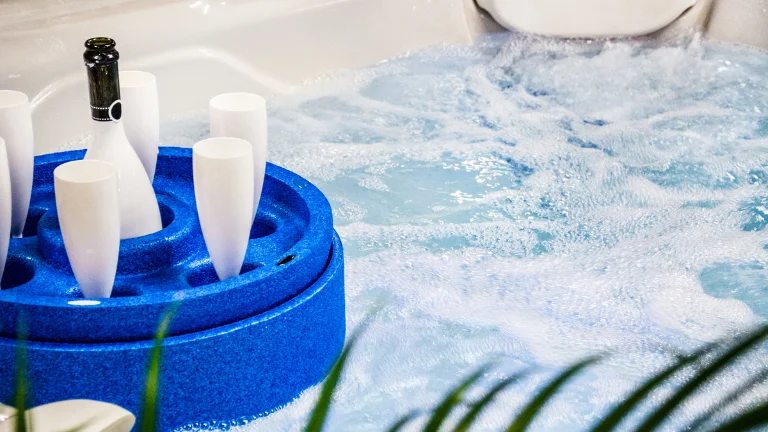What Makes Wasp Protective Clothing Essential for Outdoor Activities?
Wearing wasp-protective clothing is a must for me during outdoor activities. It’s not just about comfort; it’s about safety. Being out in nature is one of my favorite things, but encountering wasps can quickly turn a relaxing day into a painful one.
That’s why I always make sure to gear up with protective clothing. Knowing that I can enjoy my time outdoors without worrying about getting stung gives me peace of mind.
What are the risks associated with wasp stings during outdoor activities?
Wasp stings can lead to discomfort, with symptoms like pain, itching, and swelling that usually subside within a few hours. However, some individuals may experience severe reactions, including extensive swelling, redness, and systemic symptoms such as nausea and vomiting. In rare cases, wasp stings can cause anaphylaxis, a life-threatening allergic reaction that requires immediate medical attention.
Why is it important to consider protective clothing when engaging in outdoor activities where wasps are present?
Protective clothing is essential as it helps prevent wasp stings and reduces the risk of allergic reactions. It also prevents wasps from getting trapped inside clothing, which can lead to multiple stings.
Wearing appropriate protective gear, such as veils, suits, gloves, and boots, allows individuals to enjoy outdoor activities without the fear of wasp stings, especially in areas known for wasp populations or for those who are allergic to wasp venom.
Check Can Wasps Sting Through Bee Suits? Risks & Precautions
Material Matters: The Fabric of Safety
When it comes to selecting, the material you choose is paramount for ensuring both safety and comfort. Here’s a brief guide on materials that I recommend:
- Thick Cotton: A dense cotton weave is breathable and can provide a good barrier against wasps. It’s also comfortable for prolonged wear during outdoor activities.
- Polyester/Cotton Blends: These materials offer durability and are less likely to tear if a wasp attempts to sting through the fabric.
- Nylon: Nylon is lightweight and strong, making it an excellent choice for protective clothing. It can be woven tightly to prevent wasps from penetrating the material.
- Ventilated Fabrics: Some protective clothing incorporates mesh areas with sufficient ventilation to keep you cool without compromising protection.
- Synthetic Rubber: For gloves and other accessories, synthetic rubber provides a flexible and impenetrable barrier against stings.
- 3-Layer Beekeeping Jacket: This type of jacket typically features a triple-layer mesh that protects against bee stings while maintaining breathability. The outer and inner layers are usually made of a fine mesh, with a foam layer sandwiched in between to create a gap that prevents stings from reaching the skin.
[wps_alert type=”primary”]Remember, the goal is to balance protection with comfort, ensuring you can enjoy your outdoor pursuits with peace of mind. Always look for materials that are tightly woven and thick enough to prevent stings and allow for mobility and breathability.[/wps_alert]
Ensuring Long-Term Safety:
How can I ensure my wasp-protective gear is robust enough to handle the wear and tear of environments where wasps are prevalent?
To ensure robustness, select gear made from materials known for their strength and resistance to damage. Look for features like double-stitched seams, which provide extra reinforcement at critical points. High-duty cotton, thick polyester blends, or high-density nylon are excellent choices as they are less likely to tear. Additionally, consider gear that has been treated with a tear-resistant coating or constructed with a ripstop weave, a technique used in parachutes and sails for its superior durability.
What types of clothing offer reinforced seams and materials that resist tearing and endure over time?
Clothing specifically designed for wasp protection often includes reinforced panels in high-risk areas, such as the sleeves and front of jackets. These panels are usually made of ballistic nylon or Kevlar and are used in bulletproof vests. Moreover, some protective clothing may feature elasticized cuffs and waistbands to ensure a snug fit, preventing wasps from entering and reducing the risk of tears from snagging on branches or other sharp objects.
Why is it crucial to select wasp-protective clothing that retains its protective properties through multiple uses?
Durability is essential for safety and cost-effectiveness. Protective clothing that maintains its integrity after repeated use ensures you remain safe from stings. It also means you won’t have to replace your gear frequently, saving you money in the long run. Durable materials like tightly woven synthetic fibers or leather can withstand the elements and repeated cleaning without losing their protective qualities.
How do you choose materials that resist fraying and degradation, allowing you to depend on your gear for many seasons?
When choosing materials, consider those with a high tensile strength and abrasion resistance. UV-resistant materials will not degrade quickly when exposed to sunlight, which is particularly important for outdoor gear. Look for clothing that comes with a manufacturer’s warranty or durability guarantee—this not only assures the product’s quality but also indicates the manufacturer’s confidence in its longevity. Additionally, opt for chemical-resistant materials so they don’t break down when in contact with insect repellents or other substances commonly used outdoors.
Securing Full Protection:
Why is complete coverage essential when selecting wasp protective clothing?
Complete coverage is crucial because wasps can sting any exposed skin. Ensuring that every body part is covered minimizes the risk of stings, especially in environments where wasps are active.
What should I look for in full-body suits for wasp protection?
Full-body suits should cover all parts of your body, including arms, legs, and torso. The material should be thick enough to prevent stings but also allow for ease of movement. Look for suits with secure closures to prevent wasps from entering.
How important is a head veil, and what features should it have?
A head veil is vital for protecting your face and neck, which are highly sensitive. It should be made of a fine mesh that allows for clear visibility and breathability while keeping wasps out.
Can you explain the significance of arm and leg protectors in addition to the full-body suit?
Arm and leg protectors provide an additional layer of defense, particularly in areas where wasps may be more aggressive. They should fit snugly over your clothing and be durable to ensure extra protection.

Prioritizing Comfort:
Why is breathability important in wasp-protective clothing?
Breathability is key to maintaining comfort, especially in warm climates or during extended periods of wear. Materials that allow air to circulate help regulate body temperature and prevent overheating.
How does a lightweight design contribute to comfort in protective suits?
A lightweight design is crucial for ease of movement. It ensures that you can perform tasks without the burden of heavy clothing, which can lead to fatigue and discomfort.
What is the advantage of having an adjustable fit in wasp-protective clothing?
Adjustable features like elastic bands, velcro straps, or zippers provide a custom fit for different body shapes. This adaptability ensures the clothing is snug yet comfortable, allowing full mobility without the risk of exposure to stings.
Sizing for Safety:
Why is selecting the correct size in wasp protective clothing crucial for both comfort and safety?
The right size ensures that the clothing provides comprehensive protection without gaps where wasps could potentially sting. It also allows for freedom of movement, which is essential for performing tasks efficiently and safely.
What should I consider when looking for a brand of wasp clothing?
Choose a brand that offers a wide range of sizes to accommodate different body types. A proper fit is key to ensuring that the protective gear functions correctly.
How do unisex fits contribute to the selection process?
Unisex designs are practical because they are made to fit a variety of body shapes. This versatility can be especially useful for organizations that must provide protective clothing for multiple users.
What is the significance of having kids’ sizes available in protective clothing?
Children have smaller frames, and adult-sized clothing will not fit them properly, leaving them vulnerable to stings. Protective clothing designed for children will provide a better fit and more effective protection.

Trusted Brands:
It’s important to choose brands that are known for their quality and reliability. Here’s what to consider:
- Industry Standards: Always opt for gear that meets or exceeds industry safety standards. This ensures that the clothing has been tested and proven to provide effective protection.
- Customer Reviews: Take the time to read reviews from other users. Their experiences can provide valuable insights into the performance and durability of the gear.
Do Bee Suits Work For Wasps?
Yes, bee suits can protect wasps. They are typically made from materials that are not stingable by wasps, such as ventilated cotton. As long as the suit is worn correctly and sealed properly, it should offer good protection. Bee suits are designed to be worn with gloves and a hat with a veil to cover all exposed skin, further reducing the risk of stings.
However, it’s important to note that no suit can guarantee 100% immunity to wasp stings. The quality of the suit and the materials used play a significant role in the level of protection it offers.
High-quality suits with tightly woven fabrics can significantly decrease the chances of wasp stings. Pest control professionals may also use bee suits for protection against wasps, indicating their effectiveness.
If you are concerned about wasps, it’s best to check with the supplier to ensure that the bee suit you’re considering is suitable for wasp protection.
Always ensure the suit fits well and is free from any gaps or tears that could allow wasps to penetrate the barrier.
Visit more about Hot tubs Patio, and for more information about Beekeeping.
Final Thoughts:
Always prioritize your safety when around wasps. Whether you’re a seasoned beekeeper or just enjoying the great outdoors, selecting the right clothing is crucial. It should offer a blend of functionality, durability, and comfort to ensure you’re well-protected.
Are you prepared to gear up with assurance? Explore our highly-rated selection of wasp gear and discover the ideal match for your needs today! 🐝🛡️
And remember, if you have any more questions or need further assistance, feel free to reach out. I’m here to help you make informed decisions about protective gear choices. Stay safe!
Common Queries:
What Are the Essential Materials for Wasp Protective Clothing? The essential material includes high-density foam and mesh fabric. High-density foam provides a thick barrier against stings, while mesh fabric offers breathability without compromising protection. These materials are crucial for ensuring safety and comfort.
How Does Durability Affect the Quality of Wasp Protective Gear? Durability is key to the quality of wasp gear. Tear-resistant materials with reinforced seams are more likely to withstand the rigors of use and provide long-term protection. Durable gear ensures that you remain safe through multiple encounters with wasps.
Why is Full-Body Coverage Important in Wasp Protective Suits? Full-body coverage is important because it protects all areas of the body from wasp stings. This includes a full-body suit, head veil, and arm and leg protectors. Ensuring that no skin is exposed minimizes the risk of stings and provides peace of mind while working near wasps.
What Makes Wasp Clothing Comfortable to Wear? Comfort comes from breathable materials and a lightweight design. Features like adjustable fits also contribute to comfort, allowing for ease of movement and reducing fatigue during extended wear.
How Do You Choose the Right Size in Wasp Clothing? To choose the right size, consider the gear that offers multiple sizes, including unisex fits and kids’ sizes. Proper sizing is essential for effective protection and mobility, so always refer to the manufacturer’s sizing chart before purchasing.
Which Brands Offer the Best Wasp Protective Clothing? The best brands meet industry standards and have positive customer reviews. Trusted manufacturers are known for their quality and reliability, so look for brands with a strong reputation in the market.













